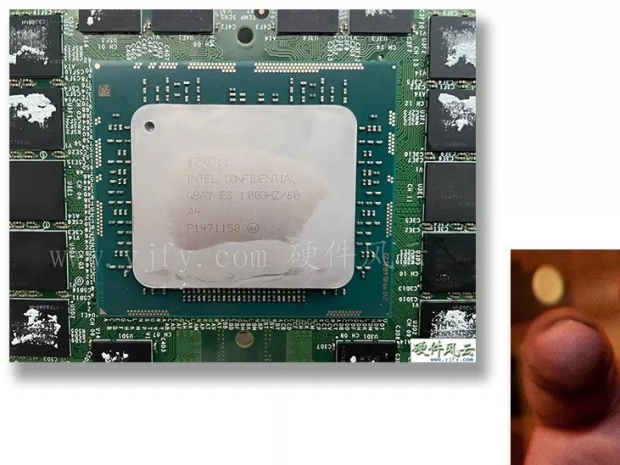Intel's Larrabee 2 graphics board was meant to be based on the chip eventually known as the Knights Corner and generated a certain buzz when it was demonstrated SC11 conference in November 2011. It was meant to be a client PC-oriented graphics processor and a high-performance computing co-processor based on 4-way Hyper-Threaded Atom-like x86 cores with AVX-512 extensions that were meant to deliver flexible programmability and competitive performance.
The processor shown is an engineering sample produced in late 2011 featuring the QBAY stepping. It allegedly features 60 cores and operates at 1.00 GHz, which corresponds to specifications of Intel's KNC. Unlike production Xeon Phi 'Knights Corner' products, the processor has 4GB of GDDR5 memory.
The board is an evaluation sample, with diagnostic LEDs, multiple connectors for probes, and jumpers. There is also a DVI connector that is typically used for video output. This all fits with what was told to the world about Larrabee project at the time.
Larrabee did not live up to expectations in graphics workloads because it was too much a CPU with graphics abilities rather than a proper GPU and Intel switched the project entirely to HPC workloads and the Xeon Phi.
Eventually, Intel's Xeon Phi, many integrated core architecture, and other massively-parallel CPU architectures were stuffed by Nvidia's compute GPUs and Intel started building its Arc GPUs making sure that Larrabee would never bee.
Half a bee, philosophically
Must, ipso facto, half not be
But half the bee has got to be
A vis-a-vis its entity, you see?



